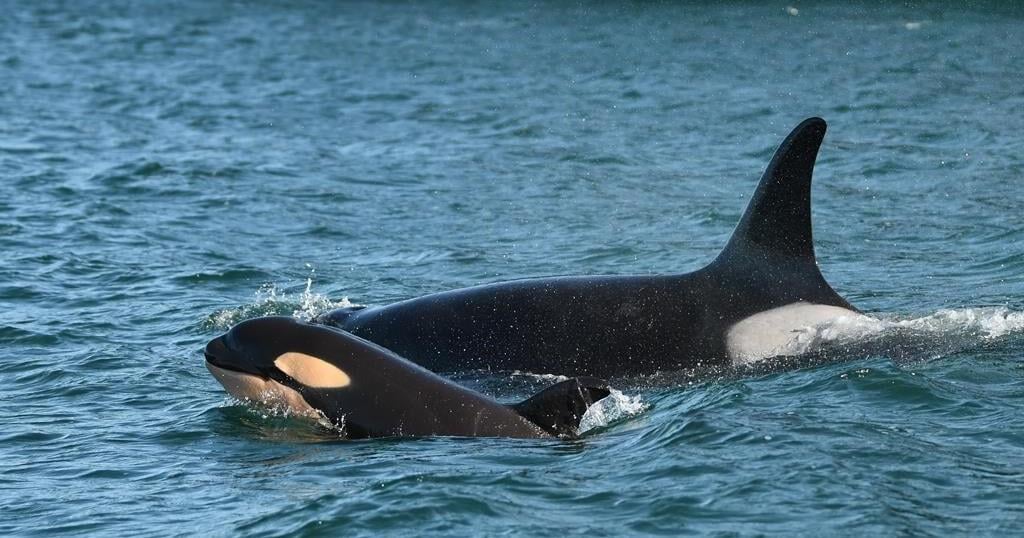FRIDAY HARBOR, Wash. – A census of endangered southern resident killer whales off the coast of British Columbia and Washington state shows the pods have lost three animals, bringing the population to 73, excluding a new calf born after the survey.
The Centre for Whale Research completed its 49th census as part of its Orca Survey program in July, finding the three pods had lost two adult males.
The population also lost a male calf, the only whale born within the census period.
The Washington-based centre says its researchers last saw one of the lost adult males in July 2023, and the animal appeared to be in “poor body condition” at the time.
It says the whale had not been seen since then, and the researchers had considered the animal to be at high risk after his mother died in 2017.
A statement from the centre on Wednesday says its research “clearly shows that survival rates are closely tied to Chinook salmon abundance,” and recovery of the endangered whales isn’t possible without an increase in their prey.
The other lost adult male was one of the oldest whales among the southern residents, born in 1991, and he appeared “somewhat thin” when he was last seen in August 2023.
The whale dubbed L85 had also lost his mother, though the centre says he had been “adopted” after her death by another member of his pod.
As for the calf that died, the centre says its short life was “strange and tumultuous.”
It says the calf called J60 was first confirmed in late December 2023, initially spotted travelling alongside a whale that had not been visibly pregnant last year.
Just one J-pod female could have given birth to the calf but they were never seen together, the centre says, and it’s unclear whether it was “a case of calf rejection, an inability of the mother to properly nurse the calf with other females attempting to help, or kidnapping.”
The pod was spotted travelling without the calf last January, leading researchers to conclude J60 likely died sometime earlier in the month.
The centre adds that it has submitted its census report to the U.S. National Oceanic and Atmospheric Administration.
This report by The Canadian Press was first published Oct. 2, 2024.






























